Sapphire
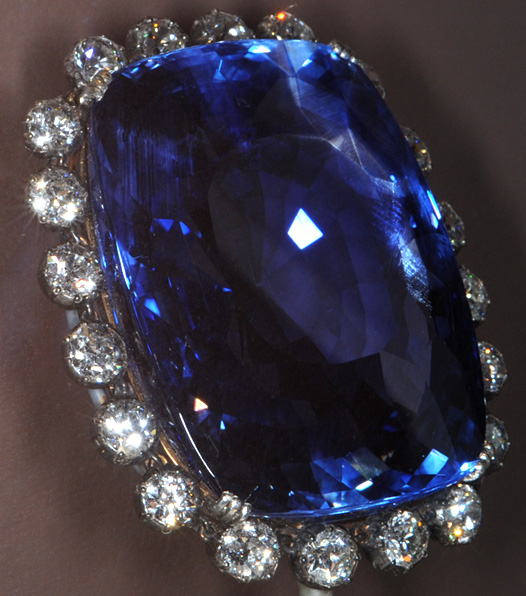 |
The Logan Sapphire is displayed in the Smithsonian Museum of Natural History. At 423 carats, this blue sapphire is the largest one on public display. The name sapphire comes from the Greek word "sappheiros" for blue. Sapphire is a type of the mineral corundum. In fact, any gem-quality corundum is called sapphire unless it is deep red, and then it is called ruby. Corundum is Al2O3, and it is clear and transparent if there are no impurities. It has a refractive index of 1.76-1.78 and a hardness of 9. Its crystal symmetry is trigonal. A trace of chromium creates pink, iron creates green and yellow, chromium plus iron creates orange, and titanium plus iron creates blue. This blue sapphire color is difficult to render by a monitor, so the color has to be seen to be believed. |
Sapphires and rubies exhibit double refraction, which resolves a beam of incident light into two beams which emerge with different colors. These two gems also sometimes exhibit a six-pointed "star" effect from reflection off microscopic, needle-shaped rutile crystals which intersect at 60° angles.
Myanmar (formerly Burma) is the major source of rubies and sapphires.
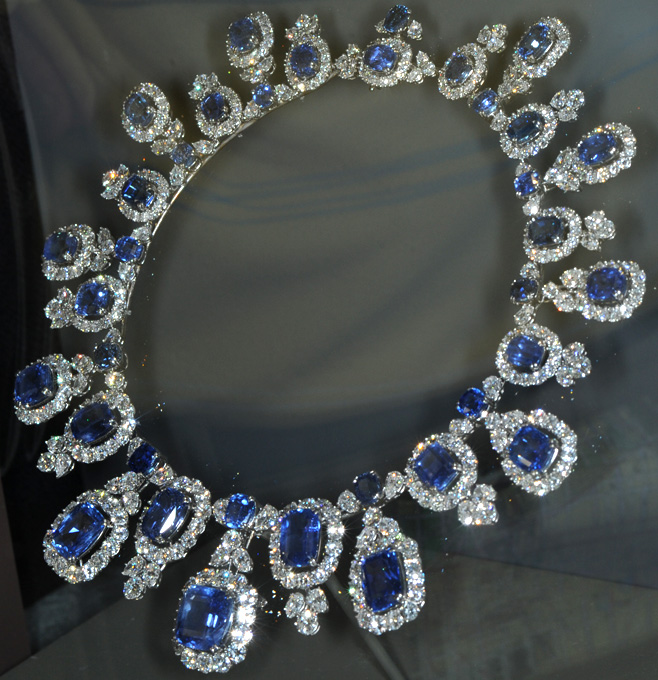 |
This is the Hall Sapphire and Diamond Necklace. It features 36 matched sapphires from Sri Lanka totaling 195 carats. Their deep sky-blue color contrasts brilliantly with a sparkling sea of 435 diamonds weighing 84 carats. |
This is the Bismarck Sapphire Necklace with a 98.6 carat sapphire. The deep blue sapphire is surrounded by 312 diamonds. 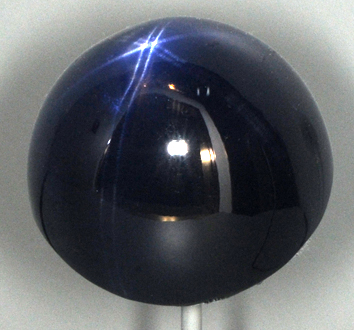 This is the 330 carat Star of Asia Sapphire, one of the most famous sapphires. It is said to have once belonged to India's Maharajah of Jodhpur. |
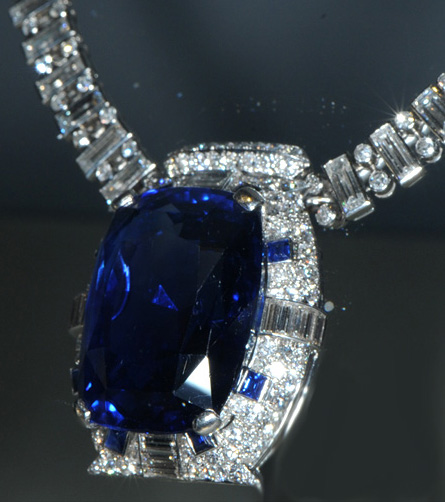 |
 |
Montana Sapphire Butterfly "Conchita". An 18k yellow gold brooch with 27.87 carats of sapphires. It is set with 333 fancy-colored Montana sapphires, most from the famed Rock Creek deposit. |
The sapphire and diamond jewelry shows the rich blue color we usually associate with sapphires..  This is a 16.8 carat sapphire gem from Burma. It illustrates the fact that sapphires are not always blue. |
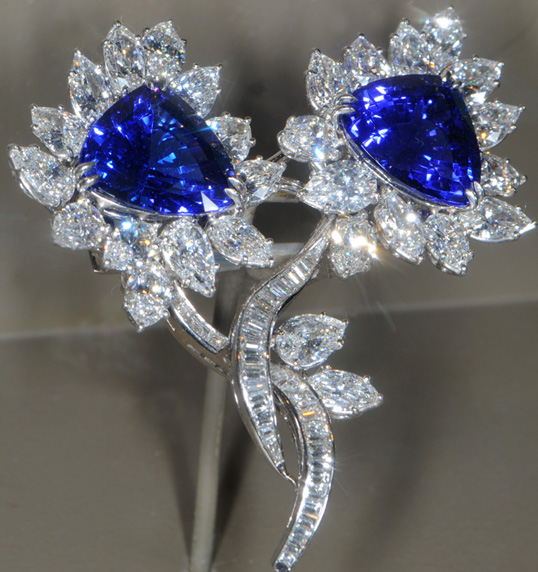 |
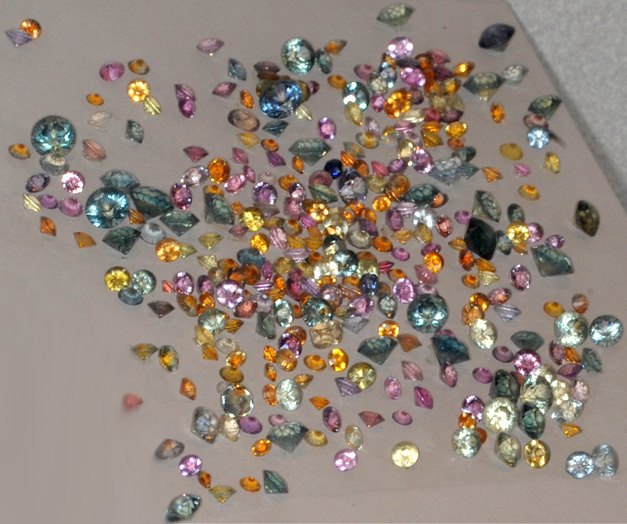 |
This display is designed to emphasize the fact that any corundum gem that is not red (which would make it a ruby) is called a sapphire. This collection of sapphires of different colors totals 153.2 carats and their source is Montana. |
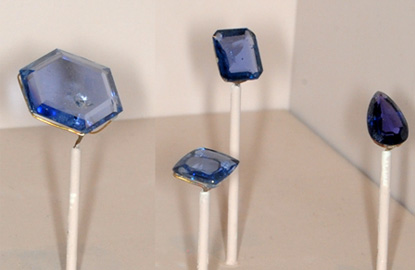 These gems are 10.2, 2.2, 2.0, and 1.9 carats and are from Yogo Gulch, Montana. |
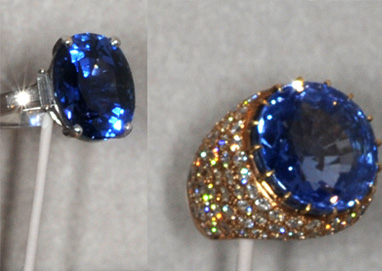 These sapphire and diamond rings have sapphires of 15.8 and 55 carats and are from Sri Lanka. |
The sapphire mineral sample at right has a height of about 5 cm. The gems are 50.7 and 92.6 carats. All are from Sri Lanka. 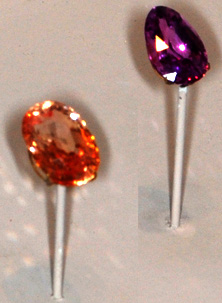 These sapphire gems are 15.2 and 10.3 carats and are from Sri Lanka. |
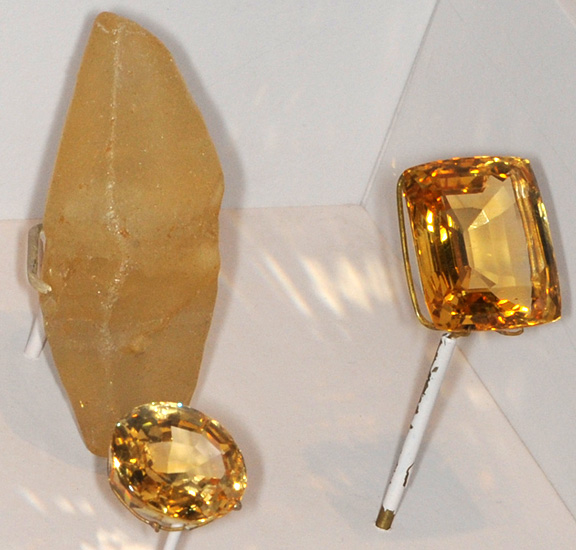 |
 These sapphire gems are 19.9 and 31.1 carats and are from Sri Lanka. The mineral sample at right is described as corundum of variety sapphire with spinel. It is about 3x5 cm and is from Kenya. |
 |
 This sapphire specimen is about 3x3 cm and is from Androy, Madagascar. |
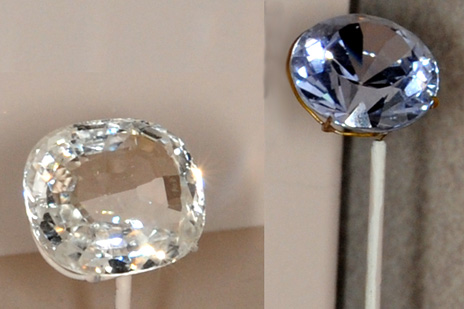 These sapphire gems are 25.3 and 15.7 carats and are from Sri Lanka. |
 These sapphire gems are 42.2, 12.8 and 27.4 carats and are from Sri Lanka. |
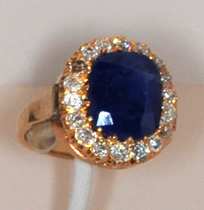 This ring contains a 4.9 carat sapphire from Kashmir. |
 | The sapphire mineral samples at left are from Ratnapura, Sri Lanka. The largest sample is about by 3 x 8 cm. 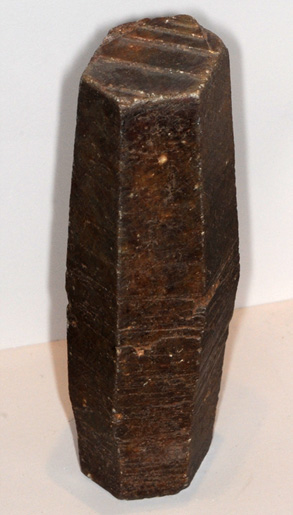 This sapphire mineral sample is about 3 x 7 cm and is from Bandelierskop, Transvaal, South Africa. |
Mindat: Sapphire
| Minerals |
| HyperPhysics*****Geophysics | R Nave |